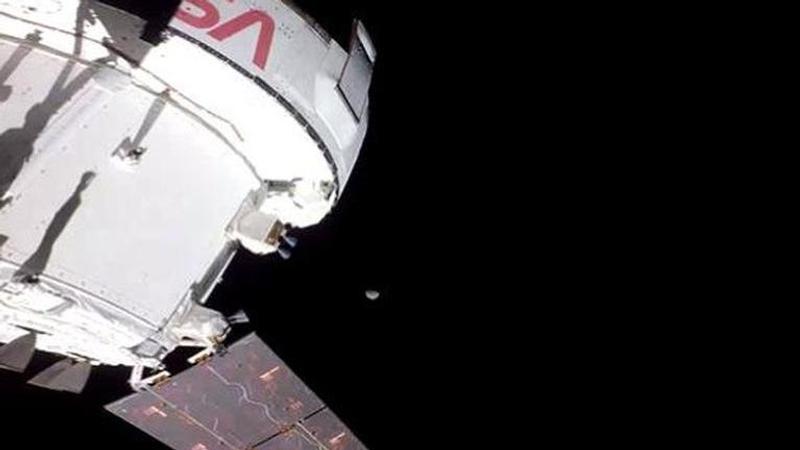Published 16:02 IST, November 20th 2022
NASA shares stunning video of Artemis 1 Orion with the Moon lurking behind | WATCH
NASA revealed that the video above was captured when mission teams carried out a maneuver to adjust Orion’s solar arrays on the third day of Artemis 1.

The Orion spacecraft is just hours away from making its first closest approach to the Moon. Launched on November 16 for NASA’s uncrewed Artemis 1 mission aboard the world’s most powerful Space Launch System (SLS) rocket, the spacecraft is scheduled for a lunar flyby on November 21 at 6:27 pm IST.
Since the forthcoming event is a crucial step for the Artemis 1 mission, every moment leading up to the flyby is turning out to be historic. Celebrating the launch of the first human-rated NASA spacecraft in over 50 years to such a distance, NASA has shared multiple clips showing Orion parting from Earth toward humanity’s next destination.
One such clip is making rounds on Twitter which features the first views Orion gathered of the Moon. NASA revealed that the video above was captured when mission teams carried out a maneuver to adjust Orion’s solar arrays on the third day and the spacecraft’s camera managed to capture the Moon rising in the darkness of space.
There are cameras attached to the four solar panels of Orion which were used by the mission controllers to inspect part of the crew module and European Service Module. While Artemis 1 is uncrewed, the spacecraft is carrying three mannequins that are strapped to the seats and equipped with sensors to measure the effects of spaceflight including radiation that astronauts would actually experience.
Watch Orion's flyby live
Orion will make its closest flyby at 6:27 pm on November 21 and you can watch the event live on NASA's official YouTube channel where the webcast starts at 5:45 pm. You can also tune in to the NASA TV, NASA app, the agency's official website or social media handles. The spacecraft, however, will not be visible during the flyby as it would be behind the Moon.
NASA says the mission teams will execute a burn at 6:14 pm by firing Orion's thrusters to adjust its path around the Moon. Notably, Orion will lose communication with ground controllers between 5:55 pm during a blackout, due to the spacecraft's position behind the Moon, which will continue till 6:29 pm.
Updated 16:02 IST, November 20th 2022



